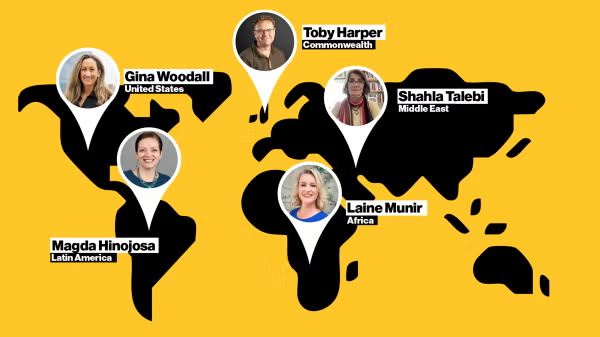In one of his first major acts, President Donald Trump formally withdrew the U.S. from a trade deal that became a flashpoint during the election.
Trump has said the Trans-Pacific Partnership was bad for American workers and that pulling out would save jobs.
The TPP trade deal would have created a Pacific trade zone not unlike the zone that NAFTA created in North America, but among a dozen countries bordering the Pacific — Japan, Vietnam, Brunei, Singapore, Malaysia, Australia, New Zealand, Canada, the U.S., Mexico, Peru and Chile. By 2030, those countries would have been able to access one another’s ports with next to no tariffs or other restrictions.
Michael Bennett, an associate research professor in the School for the Future of Innovation in Society and the Center for Science and the Imagination at Arizona State University, commented on what the move may mean in future.
Bennett’s research concerns intellectual property law regimes, science and technology policy, and the societal implications of emerging technologies.
QUESTION: The Trans-Pacific Partnership, as I understand it, was meant to be NAFTA, but for the Pacific Rim.
ANSWER: In a sense it’s similar to NAFTA in that it sought to effectively bring together a collection of nations under the guise of lowered tariffs – ‘a free-trade zone across the Americas’ — effectively was the punchline there. But TPP was more ambitious in that it sought a geopolitical collaboration, in addition to effectively creating a free-trade zone. In this regard TPP — it seems to most observers, including myself — was about checking the ascendancy of China’s power.
Q: China was the one PacRim nation that wasn’t a signatory.
A: China was excluded. It was not one of the 12 countries that negotiated the TPP pact.
Q: Now that it’s gone, what do you anticipate will be the fallout?
A: We actually started seeing in TPP negotiations, even though technically it has space in it for other countries, a space big enough for China even, ultimately it was designed as a check on China.
One of the biggest responses — and this is months old — is that China started negotiating with some of its Asia-Pacific neighbors on an alternative, a parallel pact called the Regional Comprehensive Economic Partnership.
Another fallout is that Japanese Prime Minister (Shinzo) Abe burned through a lot of political capital to get the TPP ratified there. Now he’s left hanging in a sense.
Japan is as least as complicated as the U.S. when it comes to domestic politics, so it’s unclear what that could mean both to internal Japanese politics and relationships between our two countries.
Q: What will this mean for American trade, now that it’s gone?
A: I should qualify this response by paraphrasing George Eliot and say ‘Among all forms of mistake, prophecy is the most gratuitous.’ It’s hard to say, especially in these opening moments of a new administration that seems focused on strategically deploying uncertainty around the world.
But, with that qualification, it seems the economists who have been bold enough to speak out on projections for TPP had it been ratified, predicted a significant opportunity loss in terms of revenues and gross domestic product and so forth, perhaps on the order of tens of billions of dollars, perhaps hundreds of billions of dollars.
Critics of the TPP will say those economists are politically biased, but those are the numbers we had access to.
More Law, journalism and politics

ASU experts share insights on gender equality across the globe
International Women’s Day has its roots in the American labor movement. In 1908, 15,000 women in New York City marched to protest…

ASU Law to offer its JD part time and online, addressing critical legal shortages and public service
The Sandra Day O’Connor College of Law at Arizona State University, ranked 15th among the nation’s top public law schools,…

ASU launches nonpartisan Institute of Politics to inspire future public service leaders
Former Republican presidential nominee and Arizona native Barry Goldwater once wrote, "We have forgotten that a society…

